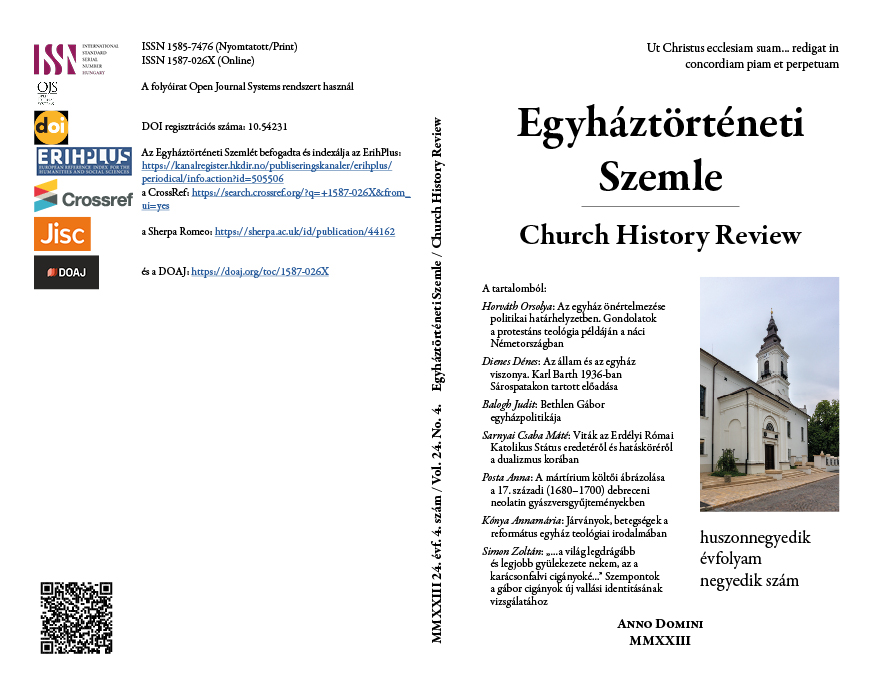Debates on the origins and powers of the Transylvanian Roman Catholic Status in the era of the Austro-Hungarian Monarchy
DOI:
https://doi.org/10.54231/ETSZEMLE.2023.4.170Keywords:
autonomy, church-state relations, ecclesiastical polity in the Austro-Hungarian Monarchy, Roman Catholic Status, TransylvaniaAbstract
The legitimacy of the Transylvanian Roman Catholic Status was questioned by several Romanian authors after the 1918–1920 regime change of Austria and Hungary, which later served as a basis for the dissolution of the centuries-old institution. They frequently refer to the writings of two Hungarian authors of the Austro-Hungarian Monarchy. In chronological order, the first of them is Ferenc Csorba’s 1891 article on Catholic autonomy in Transylvania (“Az erdélyi katholikus autonómiáról”). The other one is Gyula Forster’s 1897 major study on Catholic autonomy, published in several parts (“A Katolikus autonómiáról”).
The main reason for writing the first work was a contemporary debate related to Catholic secondary schools in Transylvania. The main issue was whether the Ministry of Religious Affairs and Public Education or the Transylvanian Roman Catholic Status should exercise certain rights over them. Forster’s writing does not deal with schools, but rather with the problem of the Status’s exercise of royal patronage and supremacy and its administration of church property. We must take into account that the debates regarding ecclesiastical polity had just ended. On the other hand, this was the time of the Second National Congress of Autonomy, which aimed to set up a Catholic autonomy organization for the whole country, including Transylvania.
In our study, we seek to answer the question why and to what extent the arguments of the two authors above could provide a basis for later Romanian authors criticizing the Status after World War I.
Downloads
Downloads
Published
Conference Proceedings Volume
Section
Categories
License

This work is licensed under a Creative Commons Attribution 4.0 International License.
The author(s) reserve the copyright of their work.
The Church History Review does not restrict the rights of authors to place their manuscripts or manuscript versions on preprint servers or other hosting. This applies generally to the following formats.
- Submitted version
- Accepted version (manuscript accepted by the author)
- Published version (Version of Record)









 Published by: Sárospataki Református Kollégium Tudományos Gyűjteményei
Published by: Sárospataki Református Kollégium Tudományos Gyűjteményei